#tegmina
Text
In case you’re wondering how crickets make the sounds they do. It’s a common misconception that they rub their legs together to make noise, but in reality most species use their wings!
The front wings (tegmina) are leathery and modified to have tiny ridges sort of like a file. When one wing is rubbed against the other (stridulation), they vibrate, generating sound. Additionally, the central part of the forewing (called the harp) is designed to resonate and amplify the sound. To make it extra loud, many crickets (like this one) face their burrows while chirping.
Crickets that sing are mainly males, and most females don’t even have the modified wings to make sound. The reason they sing has to do with mating - attracting females and repelling other males. Some species have multiple songs depending on the situation, including a “triumphal” call after successfully mating.
Species unknown
Sierra National Forest, California, US
#cricket#orthoptera#bugs#science facts#interesting#nature#biodiversity#animals#arthropods#bugblr#entomology#insect appreciation#bug#chirps#nighttime#animal video#educational#biology#sneaking up on these guys is difficult lol#sierra mountains#california wildlife#camping#🦗
26 notes
·
View notes
Video
youtube
Cricket chirping sounds are produced by male crickets as a means of communication. The sound is created by the friction between the edges of the forewings, known as tegmina. Male crickets have special structures called stridulatory organs on their wings that produce these sounds.The purpose of cricket chirping varies depending on the situation. The primary function is to attract females for mating. Male crickets produce a specific pattern of chirps that can be species-specific, acting as a calling song to signal their presence and availability to potential mates.The chirping sound can also serve as a territorial signal, warning other male crickets to stay away from their claimed area. Additionally, chirping can be a response to threatening situations or disturbances.The chirping sound is created through a process called stridulation. The cricket rubs the upper surface of one wing against the lower surface of the other wing, causing the ridges and veins on the wings to vibrate. The resulting sound is amplified by the resonating body of the cricket.The pitch, rhythm, and pattern of chirping can vary among different cricket species. Factors such as temperature, humidity, and the cricket's physiological state can influence the rate and intensity of chirping. For example, crickets tend to chirp more rapidly at higher temperatures.By studying the chirping patterns of crickets, scientists can identify different species and gain insights into their behavior and ecology. The distinct chirping sounds of crickets add to the symphony of nature and create a familiar and comforting ambiance, particularly during warm summer evenings.
#youtube#cricket sounds#cricket chrping#cricket chirping#cricket singing#crickey sounds#cricket chirping sunds#cricket chiirping video#cricket sound effect
62 notes
·
View notes
Text
fun thing I've done with Mad Ghost’s design: just for fun silhouette and design spicing-up, and to make drawing him from certain angles easier (or harder), i draw two of his quills raised higher (but still pointing back) over his mass of hair, like cockroach antennae, and the rest of his hair sits over his back like their wings and tegmina
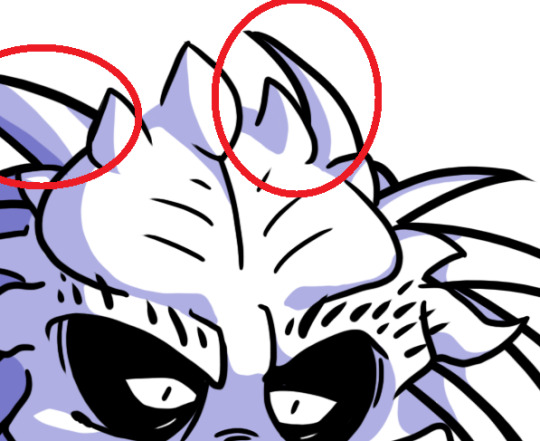


he is not based off a cockroach (i.e. original design didn’t have this specifically) and his hair doesn’t stay/stick together like the back of a cockroach (it’s like any normal Yautja hair, just long, stiff and so so much of it) BUT he does happen to survive in a nuclear hell-land eating dirt and refuses to die despite all odds and scuttles along the ground and hides in shady cracks away from light
47 notes
·
View notes
Text
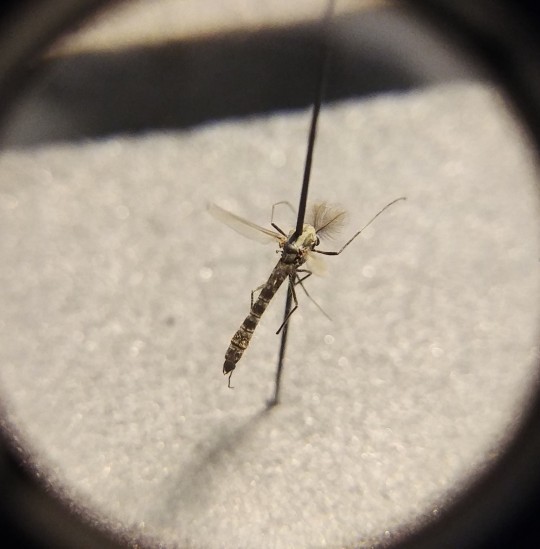
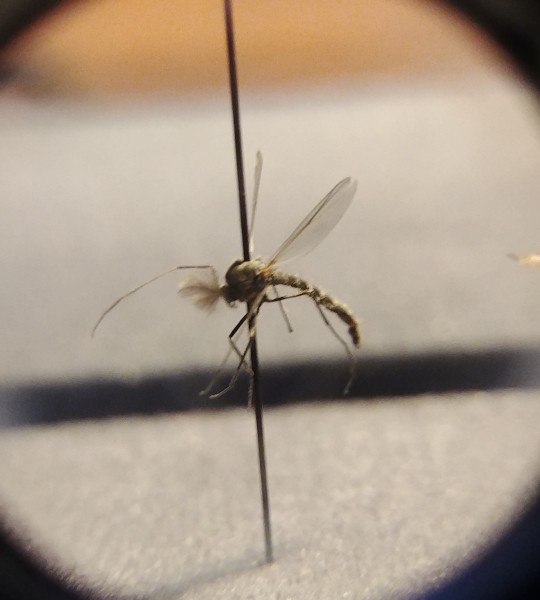

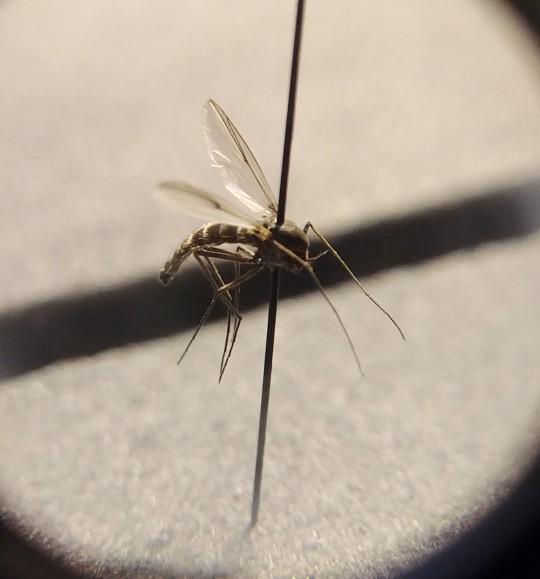
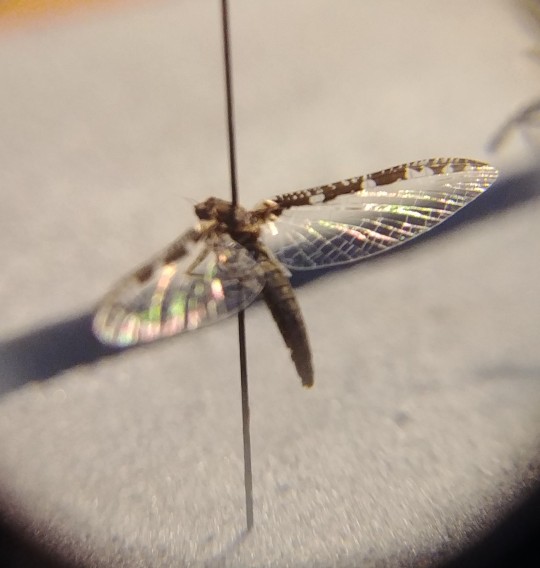

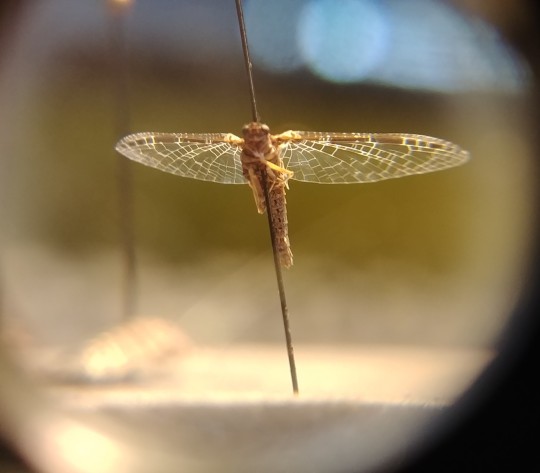
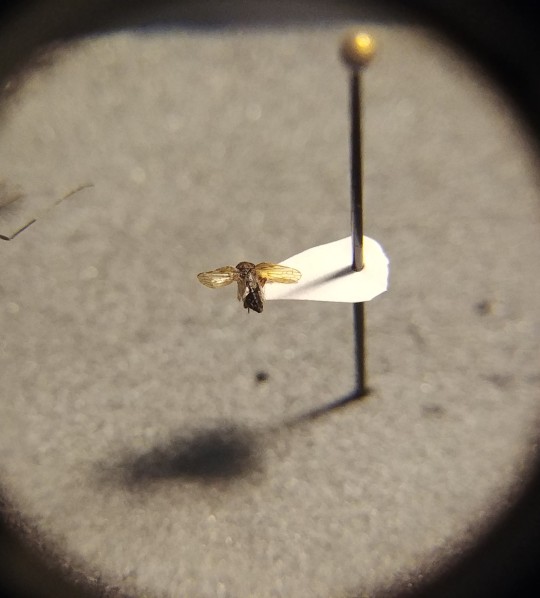
heres the results of last nights bug catching escapade. male and female mosquito (males the one with the super fuzzy antennae), a mayfly (it had its two tails but they broke off during the catching process. sad), and that little man. perviously i guessed they were a fly but they have 4 wings, not 2. the tegmina may indicate its some type of hemipteran, however its so small its hard to confirm via piercing-sucking mouthparts
2 notes
·
View notes
Text
Dictyoptera
In time, I know my mind will clasp its hands together in silent prayer of adoration.
You watching, potentially I recall,
The days I spent inside my room, softly melting beneath my sheets, anxiety-ridden
Maintain your distance, diurnal mistress, flaunt above a sea of sand,
The sound of snow beneath our boots sink softly, breath beyond our tongues.
Dear David, friend dearest, beloved burgundy camellia,
Your petals rot within my paperbacks,
Stench curling between my teeth
Made of metal and earthly crust.
In time, I know my mind will clasp its hands together to wonder what you really meant
all those years ago,
You sighing, potentially I recall,
Nails molding white crescents between your fingers,
Palms unlike the mantids we used to pin up on the walls,
Tegmina leathery and hardened in death, chitin and protein and all the like,
Cross-linking; flexible and sordid cape,
Shaped exactly like your eyelids, you told me one night, whispering in the
Sweetness
Of a midsommar,
Because you were a Dictyopteran in your past life—
I had femurs larger that Mars!
I remember, because it was here the leaves caught light of the sun,
And it was now the heat slipped between your lashes
Fluttering too softly against the lull of the morning.
I was a Dictyopteran, once.
I remember your thighs against mine on an old park bench, too hot and too warm.
I remember, we were mantids once,
Wandering the soil with our leathery capes, sordid,
Membranous wings soft and silvery under our tegmina,
Compound eyes glittering
I loved you, Creature Camellia,
But we are Dictyopterans.
#poem#this ones the response to coleoptera#did you know#that cockroaches and praying mantises are in the same order#it sucks i hate roaches#but love praying mantis bugs
0 notes
Text
sorry man don't think i can make it out tonight, i don't even have two tegmina to rub together
#🦗#cricket joke inserted into my brain by the divine and would not leave me alone until i posted this#j.txt
1 note
·
View note
Text
youtube
Cricket-insectensoorten zullen een geluid maken om hun aanwezigheid aan te geven. Om Mental Floss te citeren, maken krekels geluiden om te communiceren.
Mannelijke krekels zullen klinken om vrouwtjes aan te trekken. Vrouwelijke krekels worden aangetrokken door de beste geluidsbronnen, zoals geciteerd uit Kidadl. Wanneer gepaard, zullen mannelijke krekels geluiden maken om hun territorium te beschermen.
Het geluid van krekels is zo uniek dat veel werken van de entertainmentindustrie het achtergrondgeluid van de insecten gebruiken om een indruk te geven van de sfeer op een plek.
De voorvleugels (tegmina) van mannelijke krekels zijn ongelijk of golvend. Als de voorvleugels van de krekels tegen elkaar wrijven, maken ze een geluid. Op de voorvleugel bevindt zich een netwerk van kartels die elkaar raken, waardoor er trillingen ontstaan.
Het geluid van mannelijke krekels wordt steeds luider, omdat er een orgaan aan de zijkant van de buik (tymbal) zit. Dit zal trillingen produceren die geluid produceren.
#animal#the sound of music#nature sounds#asmr sounds#sleep sounds#rain sounds#sound design#sound#relaxing sounds#sounds#soundscape#audiophile#audio post#audio#audioproduction#audiovisual#insect#insects#crickets#cricket#Youtube
1 note
·
View note
Text
(Fig 1)Type of insect wings:
Scaly- flattened scales with hair
Elytra- hard protective cover wings
Tegmina- leathery
Membranous-transparent
Hemelytra-half leathery and half membranous
Halteres- club like
(Fig 2) Types of insect legs:
Cursorial -running
Fossorial - digging
Saltatorial - jumping
Raptorial -catching and holding
Natatorial - swimming
(Fig 3) Types of insect antennas:
Geniculate - elbowed
Plumose - feathery
Pectinate - comb-like
Serrate - saw-toothed
Clavate - gradual club
Filiform - thread-like
Aristate - bristle-like
Setaceous - bristle-like with feathering hairs
Moniliform- bead-like
Lamellate- finger-like
Capitate - clubbed
Wings
Venation, or arrangement of veins
In the wings , is different for each species of insect; thus it serves as a means of identification (figure 1). Many insect orders end in “ptera” which comes from the Greek word for wing. For instance, Hemiptera means “half-winged”, Hymenoptera means “membrane winged”. And Diptera means “two-wings”. Most immature insects do not have wings, but some have wing pads that enlarge as the insect grows toward adult-hood. One wing modification of flies is the presence of halteres, which are small, knobbed structures that replace the hind pair of wings and aid in balance.
Antennae
The antennae are a prominent and distinctive feature of most insects and a pair is always present on the head.
Antennae are located between or in front of the eyes and are segmented structures that vary greatly in form and complexity(figure 3).
0 notes
Text
Scansion of aeneid

But what you should know, if you're able to understand the text, is that illa is the subject of the new sentence (it's the spear, flying through the air). Let's assume that you don't know for a fact whether volans starts with a long or a short: then the possibles are either SS ( illa / volans), or DS (illa vo / lans u-) or DD (illa vo/ lans umer-). Relating it to what I was saying before, the -ans of volans has to be long, so you know SD won't work. Honestly it's not as hard as it seems, once you get the knack: a bit like riding a bike. With those things in place, the rest comes from jumping in and doing it, keeping the rhythm going in your head pretty quickly you learn the syllable lengths of all the common words, and it becomes much easier. caua), long -i for just about anything on the end of a verb or noun, and the some for -o. and gen.s., the long -a of the ablative s. in the third declension, but short for nom.s. But if you also understand the Latin, it certainly helps to know the length of endings (like the long -is of abl/dat pl. Those syllables are the easiest to spot, because they're most visible. 'surgunt qua' you've got as long-short-short, but 'untq' is about as long a syllable as they come! Similarly 'fulgentem', can't be a dactyl 'librans' can't be two shorts, nor can 'nostrum p-' Of course I don't know what level you're at linguistically - you might not even understand this text, and still need to recite it for some reason.ĭiagnosing your case, I'd say you seem a bit insensitive to syllables ending in clusters of consonants, which you often gloss over as if they were short. We're all noobs in some sphere of activity. SSSSDTĬorruit in uulnus (sonitum super arma dedere) DDDSDTĮt terram hostilem moriens petit ore cruento. Una eademque uia sanguis animusque sequuntur. Ille rapit calidum frustra de uulnere telum: SSDDDT Loricaeque moras et pectus perforat ingens. Uibranti cuspis medium transuerberat ictu DSSSDT Quem pellis totiens obeat circumdata tauri, DDSSDT 'aspice num mage sit nostrum penetrabile telum.' DDDSDTĭixerat at clipeum, tot ferri terga, tot aeris, DSDSDT In Pallanta diu librans iacit atque ita fatur: SDDSDT Hic Turnus ferro praefixum robur acuto SSSSDT Tandem etiam magno strinxit de corpore Turni. Incidit, atque uiam clipei molita per oras DSSDDT Illa uolans umeri surgunt qua tegmina summa SSDDDT Uaginaque caua fulgentem deripit ensem, SSSDDT Can you guys tell what I may be misunderstanding about scansion? Thanks!Īt Pallas magnis emittit uiribus hastam SSSDDT I do really want to understand the patterns and get this right. I took a second look at it and it may be more correct this time, but I don't know. Wow, thank you so much! I tried the next bit. Una eademque uia sanguis animusque sequuntur.Ĭorruit in uulnus (sonitum super arma dedere)Įt terram hostilem moriens petit ore cruento. Ille rapit calidum frustra de uulnere telum: Uibranti cuspis medium transuerberat ictu Quem pellis totiens obeat circumdata tauri, 'aspice num mage sit nostrum penetrabile telum.'ĭixerat at clipeum, tot ferri terga, tot aeris, In Pallanta diu librans iacit atque ita fatur: 480 Incidit, atque uiam clipei molita per oras Illa uolans umeri surgunt qua tegmina summa Sic ait, atque oculos Rutulorum reicit aruis. Sarpedon, mea progenies etiam sua Turnumįata uocant metasque dati peruenit ad aeui.' Tot gnati cecidere deum, quin occidit una 470 Omnibus est uitae sed famam extendere factis, 'stat sua cuique dies, breue et inreparabile tempus Uictoremque ferant morientia lumina Turni.'Ĭorde premit gemitum lacrimasque effundit inanis. Te precor, Alcide, coeptis ingentibus adsis.Ĭernat semineci sibi me rapere arma cruenta 'per patris hospitium et mensas, quas aduena adisti, 460 Uiribus imparibus, magnumque ita ad aethera fatur: Ire prior Pallas, si qua fors adiuuet ausum Hunc ubi contiguum missae fore credidit hastae, Stare procul campis meditantem in proelia taurum, 455Īduolat, haud alia est Turni uenientis imago. Tolle minas.' fatus medium procedit in aequor įrigidus Arcadibus coit in praecordia sanguis.ĭesiluit Turnus biiugis, pedes apparat ireĬomminus utque leo, specula cum uidit ab alta 'aut spoliis ego iam raptis laudabor opimisĪut leto insigni: sorti pater aequus utrique est. Talibus et dictis it contra dicta tyranni: Lumina uoluit obitque truci procul omnia uisu, Miratus stupet in Turno corpusque per ingens Thanks!Īt Rutulum abscessu iuuenis tum iussa superba 445 Can someone help me scan these lines from Book X in the Aeneid? S (spondee) and D (dactyl) are fine.

0 notes
Text
Cockroach - A Home Infestations
They may not be a novice to us. They commonly happen in our homes and therefore are referred to as household pests. They may be cockroaches. They may be within every part around the globe with special mention of tropics. Several varieties of cockroaches have already been isolated from India. The most famous species are Periplaneta Americana and Blatta orientalis. They are part of the phylum Arthropoda and class Insecta. The transaction that they are positioned is Dictyoptera. They normally inhabit houses, restaurants, hotels, bakeries, food stores and also railway compartments and ship holds.
Cockroaches are nocturnal insects which remain hidden through the daytime in cracks, holes or crevices of kitchens, godowns, hotels, public toilets, neglected bags, boxes and also other articles but turn out at night in order to acquire their nutrition. They are fast runners and run quickly on being disturbed. Cockroaches also have their wings to fly so that you can get off their predators. Body colour varies from brown to brownish black. Body's dorsoventrally flattened measuring 3-5 cm in size. Mouth bears mandibulate kind of mouth parts. Eyes are compound like other arthropods fitted to mosaic vision using a single ocellus. Antennae bear around 100 segments and are filiform fit. Pronotum is characteristically large within the dorsum from the head being a hood. Forewings are somewhat thickened and therefore are designated as tegmina whilst the hind wings are membranous and fan shaped. Legs are cursorial. These are recognized by the existence of a couple of styli about the last abdominal segment generally known as sternum. Females bear decreased ovipositor on the seventh abdominal segment. External genitalia of male are asymmetrical in shape.

The breeding season for cockroaches comes from March-September during which they remain very active. Copulation is as well as egg laying. Eggs are laid in bag like structures known as ootheca which are deep brown in colour. Oothecae are marked by sculptured patterns this will let you definite shape which is sign of a species. The volume of eggs in an ootheca is different from 15-40 arranged in double rows. Formation of ootheca takes a couple of days and frequently might be found connected to the substratum. Female lays around 100 oothecae in her overall lifespan each containing 16 eggs. The hatching of eggs is determined by the temperature and humidity of the environment. They hatch after 35 days in summers but take 100 days during winter. The larval development can also be influenced by the weather conditions. Nymphs or the larvae become adults in Six months in summers but will take 2 years being adults in winters. The creation of nymphs into adults is of hemimetabolous type plus they shed their cuticle during moulting. 10-13 moults have already been notice within the life good reputation for cockroaches. Under favourable conditions 2-3 generations exist in 12 months otherwise only a single generation is found.
Cockroaches are omnivorous and feed on a variety of food materials. They're dirty, distasteful and odoriferous creatures and so are attracted towards garbage, food stuffs consumed by humans. They enter any food material consume it, discolour and spot it with faecal material leave behind a foul smell. Also, they are referred to as transmitters of some diseases like tuberculosis, cholera, leprosy, dysentery and typhoid. Infestion of cockroaches in homes could be prevented by continuing to keep all the pipelines, safety tanks, tightly sealed. Food stuffs needs to be completely covered. Insecticides may be used so that you can control them. Cockroaches could possibly be attracted towards a source of food then could be killed. Each of the crevices and cracks in the houses ought to be sealed.
More details about sredstva ot blokh v kvartire web page: check it out.
1 note
·
View note
Photo

Tytire, tu patulae DISEGNANS sub tegmina fagi.... (Spring = a most happy Arja drawing outside. With a sudden feeling of Arcadia, Vergil and Eclogues.)
#the last bacchae#pencil drawing#webcomic#traditional art#dionysus#pose study#comic pages#artists on tumblr#pencil
4 notes
·
View notes
Video
youtube
Rosie and the ROACHES - Dubia Roaches as Pets - Animal Facts Yes, our girl collects roaches as pets. Mostly, they are feeder roaches that she has liberated. Blaptica dubia, the Dubia roach, also known as the orange-spotted cockroach,[2] Guyana spotted cockroach,[3] or Argentinian wood cockroach,[4][5] is a medium-sized species of cockroach which grows to around 4.0–4.5 cm (1.6–1.8 in).[6][7] They are sexually dimorphic; adult males have full wings covering their body, while females have only tiny wing stubs, their tegmina (forewings) being around a fourth of their body length.[6][8] Adults are dark brown to black with somewhat lighter orange spot/stripe patterning sometimes visible only in bright light. Coloration does differ slightly with environment and diet from one colony to another. Blaptica dubia are ovoviviparous, giving birth to live young,[9] and can give birth to 20 to 40 nymphs per month under favorable conditions. The Dubia cockroach is found in Central and South America, beginning in Costa Rica. It is common from French Guyana and Brazil to Argentina. Documented specimens have been found in Brazil,[10] Argentina,[6] and Uruguay. CLICK TO SUBSCRIBE - https://goo.gl/MFyIeQ Animal Facts publishes EVERY Monday and Friday, so click the notification bell to not miss a single fact. GET ANIMAL FACTS notifications in your Facebook Messenger Inbox - http://ift.tt/2s1YTmw HELP MAKE MORE VIDEOS LIKE THIS ONE! Become a Patron for as little as a dollar a month. http://ift.tt/2zblPE0 Our Official Website - http://ift.tt/2hJcgmZ You're here because you have a love for animals and want to know more about them. We're here because we love animals and want to know more about them and share that knowledge with you. If you love Animals, go ahead and subscribe, we publish on Mondays and Fridays. So, whether you're a dog lover, a cat fancier or have some less domestic critter in mind, let us know if you'd like us to cover an animal in a comment or in a message. We're all ears. by Animal Facts
#Rosie and the ROACHES - Dubia Roaches as Pets (blaptica dubia) - Animal Facts Rosie and the ROACHES
0 notes
Video
youtube
AWWWW It's my old video (a year ago!) with me and Tegmina! :D She passed away about 3 weeks after this video, much like I said. It was kinda unexpected and rather sad. I cried. I'm not gonna lie.
She was a Chinese Praying Mantis. They are like little insect cats. That's the ONLY way I can explain praying mantids. :3 Unfortunately her eggs dried up and never hatched, which makes me the saddest panda of sad pandas, because I really was looking forward to raising the babies.
I look like such a dork. hahaha
3 notes
·
View notes
Video
youtube
Rosie and the ROACHES - Dubia Roaches as Pets - Animal Facts Yes, our girl collects roaches as pets. Mostly, they are feeder roaches that she has liberated. Blaptica dubia, the Dubia roach, also known as the orange-spotted cockroach,[2] Guyana spotted cockroach,[3] or Argentinian wood cockroach,[4][5] is a medium-sized species of cockroach which grows to around 4.0–4.5 cm (1.6–1.8 in).[6][7] They are sexually dimorphic; adult males have full wings covering their body, while females have only tiny wing stubs, their tegmina (forewings) being around a fourth of their body length.[6][8] Adults are dark brown to black with somewhat lighter orange spot/stripe patterning sometimes visible only in bright light. Coloration does differ slightly with environment and diet from one colony to another. Blaptica dubia are ovoviviparous, giving birth to live young,[9] and can give birth to 20 to 40 nymphs per month under favorable conditions. The Dubia cockroach is found in Central and South America, beginning in Costa Rica. It is common from French Guyana and Brazil to Argentina. Documented specimens have been found in Brazil,[10] Argentina,[6] and Uruguay. CLICK TO SUBSCRIBE - https://goo.gl/MFyIeQ Animal Facts publishes EVERY Monday and Friday, so click the notification bell to not miss a single fact. GET ANIMAL FACTS notifications in your Facebook Messenger Inbox - http://ift.tt/2s1YTmw HELP MAKE MORE VIDEOS LIKE THIS ONE! Become a Patron for as little as a dollar a month. http://ift.tt/2zblPE0 Our Official Website - http://ift.tt/2hJcgmZ You're here because you have a love for animals and want to know more about them. We're here because we love animals and want to know more about them and share that knowledge with you. If you love Animals, go ahead and subscribe, we publish on Mondays and Fridays. So, whether you're a dog lover, a cat fancier or have some less domestic critter in mind, let us know if you'd like us to cover an animal in a comment or in a message. We're all ears. by Animal Facts
0 notes